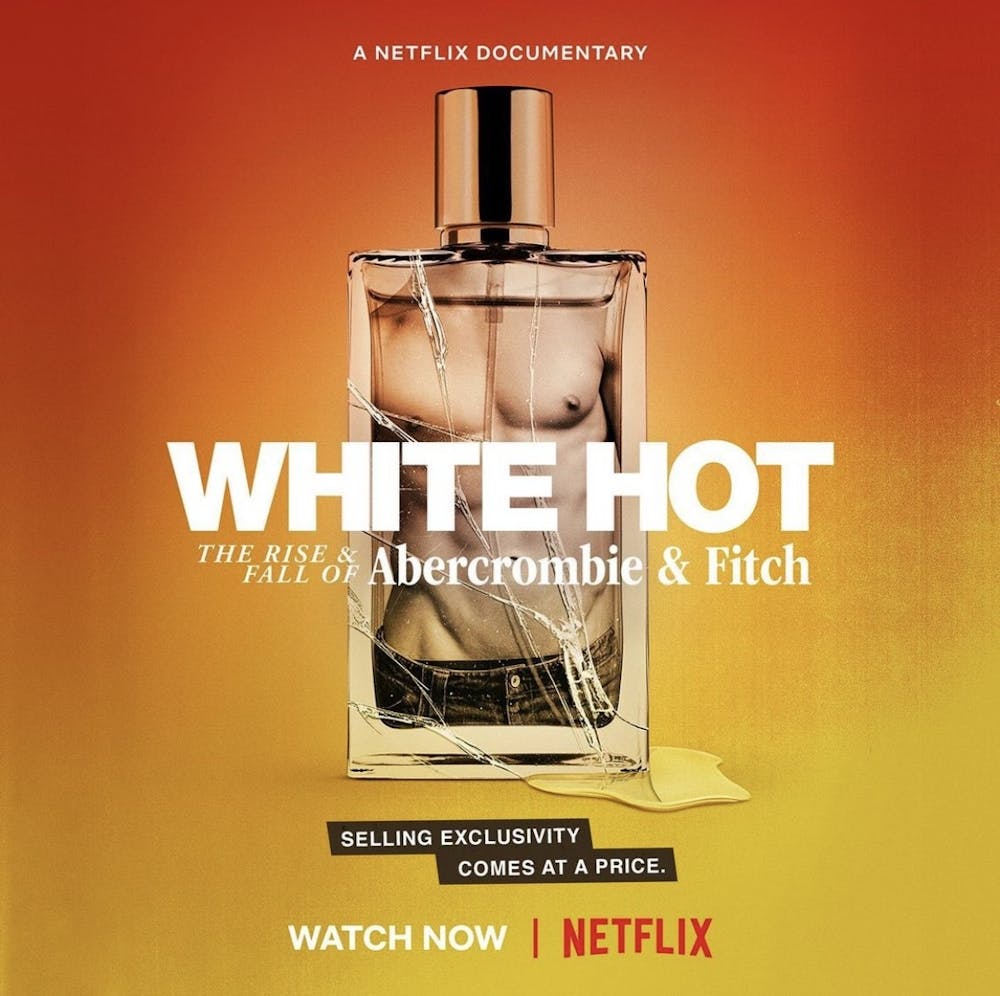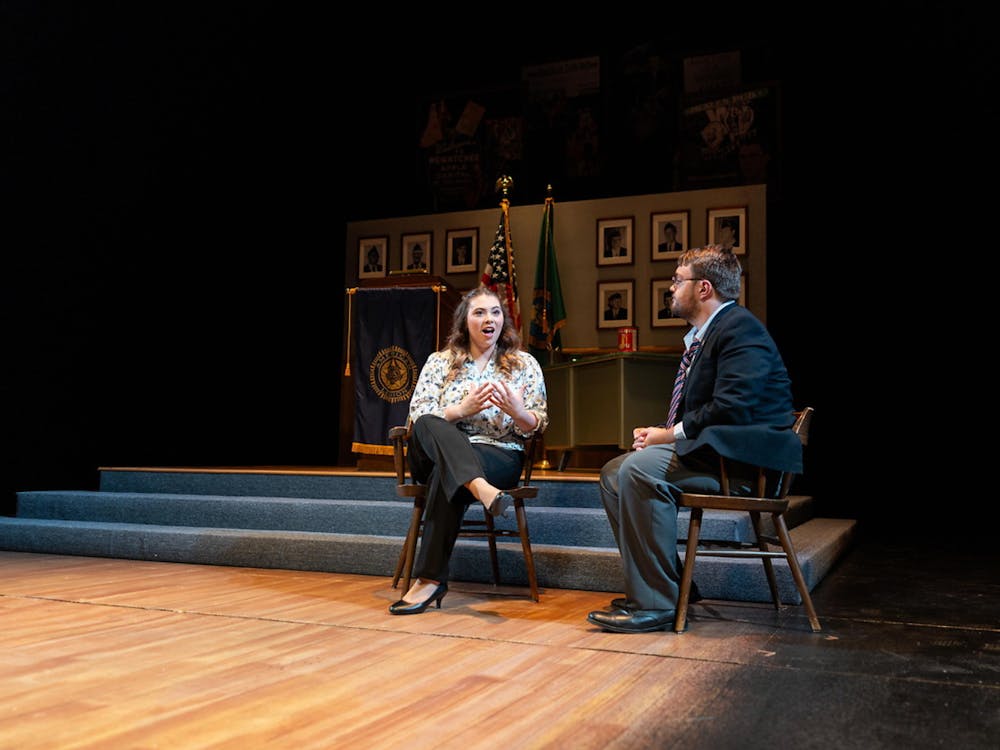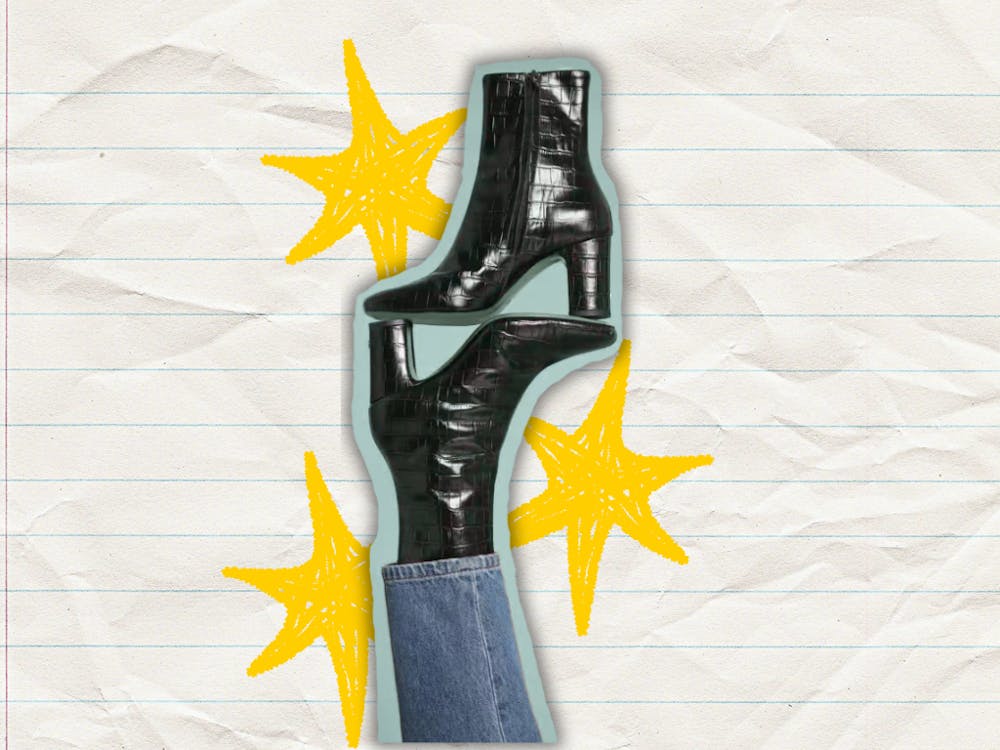Anyone walking into a mall in the early 2000s would be able to identify an Abercrombie & Fitch store. With the blasting club music and the overwhelming iconic scent, Abercrombie & Fitch had an identifiable aesthetic that catered to one group: rich, thin, white, cool kids.
The new Netflix documentary, “White Hot: The Rise & Fall of Abercrombie & Fitch,” exposes the elitist and racist behaviors that built a billion dollar company under the leadership of former CEO Michael Jeffries.
Before the company embraced its preppy aesthetic, it began as a men’s sporting store. As the fashion industry evolved, the company failed to keep up. In 1977, the company filed for bankruptcy and was owned by different corporations before fully relaunching under Jeffries in 1992.
Jeffries wanted to maintain the company’s roots but combine them with youthful, current fashion.
“[Jeffries] came up with this formula that worked,” Sapna Maheshwari, a New York Times business reporter, said in the Netflix documentary. “He found a way to connect the heritage of Abercrombie as established in 1892, catering to elite, privileged people and combined it with this very sexy, sexual imagery.”
This became the image of Abercrombie & Fitch most of us grew up with: half-naked male models wearing ripped jeans with the band of their boxers peeking through and unattainably thin female models wearing low-waisted jeans and skin-tight shirts that read “A&F.”
Even when I was an early teenager, I knew this marketing was toxic, but it didn’t erase the desire I felt to look like those models.
In a 2006 interview with Salon, Jeffries said sex was crucial to the brand identity of Abercrombie & Fitch.
“That's why we hire good-looking people in our stores," Jeffries said. "Because good-looking people attract other good-looking people, and we want to market to cool, good-looking people. We don't market to anyone other than that."
In the same interview, Jeffries admits that the brand is exclusive, but the exclusivity maintained the brand's relevance during the peak of “mall culture” in the early 2000s.
"In every school, there are the cool and popular kids, and then there are the not-so-cool kids," Jeffries said. "Candidly, we go after the cool kids. We go after the attractive all-American kid with a great attitude and a lot of friends. A lot of people don't belong [in our clothes], and they can't belong.”
The thought of a successful businessman saying these things in a published interview almost seems unbelievable. However, sixteen years ago, consumers, including myself, didn’t even notice Jeffries’s mission to exclude anyone who wasn’t white, rich, young, and thin.
Enjoy what you're reading?
Signup for our newsletter
Christopher Clayton, a former Abercrombie & Fitch recruiter, was required to find the "attractive all-American” kids Jeffries described.
“As a manager at Abercrombie, they teach you very early on about recruiting,” Clayton said in the documentary. “...but not only do you have to recruit, you have to recruit good-looking people ... We literally had a book.”
The managers' manual included rules such as “a neatly combed, attractive, natural, classic hairstyle is acceptable. Dreadlocks are unacceptable for men and women," “brand representatives are required to wear appropriate undergarments at all times," and “our people in the store are an inspiration to the customer.”
For eleven years, the company operated this way under Jeffries because who wouldn’t want to work for a brand that capitalizes on “pretty” people. Being hired by Abercrombie & Fitch was like getting invited to sit at the “cool table” in high school.
It wasn’t until 2003, that the company experienced its first public scandal. Abercrombie & Fitch was sued for racial and sexual discrimination in the workplace.
Carla Barrientos, one of the named plaintiffs in the lawsuit, was only scheduled nights to clean the store. After asking her manager for more day shifts, she was cut from the schedule. Barrientos was the only Black employee at her store.
Jennifer Sheahan, another one of the named plaintiffs, said she was fired because she didn’t look like the blond models on posters that covered the store.
“...one of the people from corporate went around, and they noticed a bunch of Asian people in the store,” Sheahan said in the documentary. “They said, ‘You need to have more staff that looks like this,’ and they pointed to an Abercrombie poster, and it was a Caucasian model.”
Anthony Ocampo tried to get rehired at the store he previously worked at but couldn’t because his manager said there were too many Filipino employees working at the store.
“At no point did I ever say I was Filipino, so that was a guess on the part of the person that worked there that I was Filipino,” Ocampo said in the documentary.
The lawsuit ended in 2004 with a settlement and consent decree from the company. Abercrombie & Fitch was required to pay $40 million to several thousand minority and female plaintiffs, hire 25 diversity recruiters and create a Chief Diversity Officer position. They also had to report their progress to a court-appointed monitor for six years, but there were no penalties for missing benchmarks.
I believe the 2004 lawsuit could have been the end of Abercrombie & Fitch, but the court ruling permitted the company’s toxic behavior. By not holding Abercrombie & Fitch accountable for missed benchmarks, they excused the bullying behavior that, instead of destroying, in turn enabled a billion dollar company.
According to the documentary, Abercrombie & Fitch repeatedly missed benchmarks and underrepresented minorities in marketing and hiring, but the company was never found in violation of the consent decree.
In 2015, the company was under fire again after Samantha Elauf claimed they would not hire her because her headscarf did not align with the dress code.
Personally, it comes to no surprise that the company would fall back into its old habits when they were never reprimanded for their past behavior.
The Supreme Court ruled that companies can have dress codes, but they cannot discriminate based on an applicant’s religious practices. Two other employees sued the company after facing similar behaviors from store managers, and the company changed its policy to allow dress code accommodations for religious practices.
In 2014, Jeffries stepped down from his role as CEO of the company. In an article from the Washington Post, an anonymous source explained that this decision was a long time coming, but “the departure was a joint decision by Jeffries and the board, and unrelated to the controversial comments Jeffries made in the past.”
If there was going to be any future for Abercrombie & Fitch in today’s fashion industry, Jeffries would have been forced to step-down, and I think he knew that in 2014 and took it upon himself to leave.
In 2017, Fran Horowitz took over the company and pledged to rebrand Abercrombie & Fitch to include everyone.
Today, Abercrombie & Fitch’s website embraces models of different sizes, races and gender-orientations, but why did it take until 2017, just four years ago, to get here?
It took far too long for the company to increase representation when millions of other brands have been doing this for years.
It makes me weary to support a company that still has some of the same people who served under Jeffries in the boardrooms making decisions.
In order for me to feel more comfortable supporting the brand, I need to see the same dedication Abercrombie & Fitch had to marketing for the “cool kids” applied to diversity and representation.
As a billion dollar company, Abercrombie & Fitch serves as an example of the questionable ethics of the retail industry.
In the documentary, Robin Givhan, a journalist at the Washington Post, explained that Abercrombie & Fitch is just one example of fashion brands marketing an unrealistic cliché of “beauty,” and warns other brands from following a similar path.
“The story of Abercrombie is essentially an incredible indictment of where our culture was just ten years ago,” Givhan said. “It was a culture that defined beauty as thin and white and young and it was a culture that was very happy to exclude people.”




